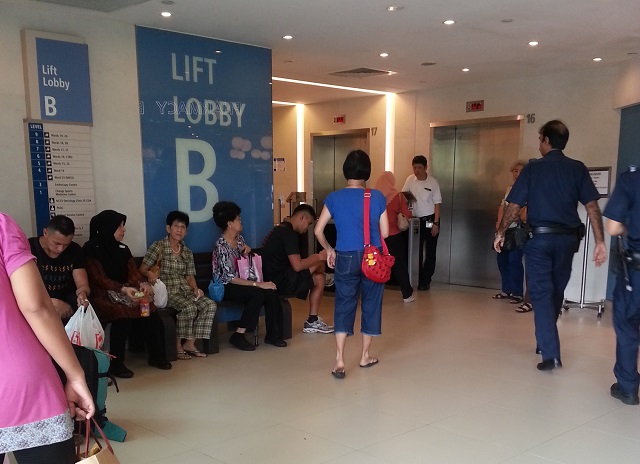It was quite similar to a scene from the American hospital drama series, ER.
Sick people huddling under blankets, medical professionals pouring over hospital admission documents, narrow walkways being used as makeshift wards, people waiting for their turn to seek treatment and nurses flitting from one patient to another.
The only difference was that this was real and happening right here in Singapore — at the Changi General Hospital’s Accident & Emergency Department and the Admissions Transit Area (ATA). Both areas were so congested that the only way to accommodate the burgeoning patient load was to build a make-shift extension wing outside the ATA’s exit door. The extension wing was, in fact, an air-conditioned tent-like ward. The Straits Times called it “a large, air-conditioned tent”.
Despite its size, the tent was still unable to ease congestion.
When The Independent Singapore visited the hospital on Wednesday afternoon, eight of the 12 beds inside the transit area were not occupied.
In the normal wards, the situation was just as bad as the A&E Department, with every bed in the Class C wards occupied. In Class B wards, the occupancy rate was close to 90 per cent. There were also more elderly patients resting in beds.
Some were acute stroke patients who required care from nurses.
One elderly patient, an 80-year-old man who wished to be known as Mr Lim, said that he has been there for about two weeks and “wants to go home soon”.
Another elderly man, 76-year-old stroke patient A. T. Chua who was admitted a week and a half ago, said that he would like to be discharged soon as he “would like to ‘lim kopi’ (have coffee) with friends”.
While the left side of his body was numb, he had regained a measure of muscle control and spoke coherently.
Arguably, patients like Chua are suitable candidates for step-down care, which is provided by the Agency for Integrated Care. Patients would be taken out of hospitals to more specialised care, freeing up beds for patients who need urgent medical care. But somehow that was not happening.
The Khoo Teck Puat Hospital is facing similar problems. It had to send patients to nearby Alexandra Hospital. Patient Services Associate Ms Jaycee Tan said that there has been an increase in the number of patients over the last few months as more and more people needed to be admitted for treatment.
The National University Hospital is also renting ward space from Westpoint Hospital.
So what could be the cause behind the bed crunch in public hospitals? Could it be due to the spike in illnesses like the deadly dengue fever or that as Singaporeans age, more older people are going to the hospitals to seek treatment? Or could it be due to a lack of healthcare professionals, especially doctors, in Singapore?
Whatever the case, hospital bed crunches are not new in Singapore. In 2010, there were reports in the mainstream media that public hospitals were suffering from a shortage of beds. They are, according to Dr Paul Tambyah, a natural consequence of a healthcare model that depends to a large degree on payments from employers and patients.
“There’s a great reluctance to build “excess” or surge capacity. While bed crunches do occur in under-funded government systems without adequate resources, most developed countries with mandatory universal health insurance such as Germany or France traditionally do not have such problems. Support for long term care, both institutional and home- based, in these countries helps ease some of the burden from acute care hospitals.
“The long-term solution is a comprehensive, universal, affordable healthcare plan that covers hospital, outpatient and long term care.”
Said Dr Tan Lip Hong, a general practitioner: “The government has been under-investing in healthcare infrastructure for decades. Our hospital bed: population ratio is way below developed country standard. The total population of Singapore has increased by at least 35 per cent in the last decade, yet the total number of hospital beds has remained more or less constant.”
When Khaw Boon Wan was Health Minister, he promised in 2010 that there won’t be a bed crunch problem again. Just four years later, the problem has returned with egg on his face. Add to this the string of embarrassments that started with the audacious escape of terrorist Mas Selamat in 2008 to this shocking state of our medical infrastructure inefficiency and one cannot but conclude that Singapore is becoming a normal country. A very normal country .


